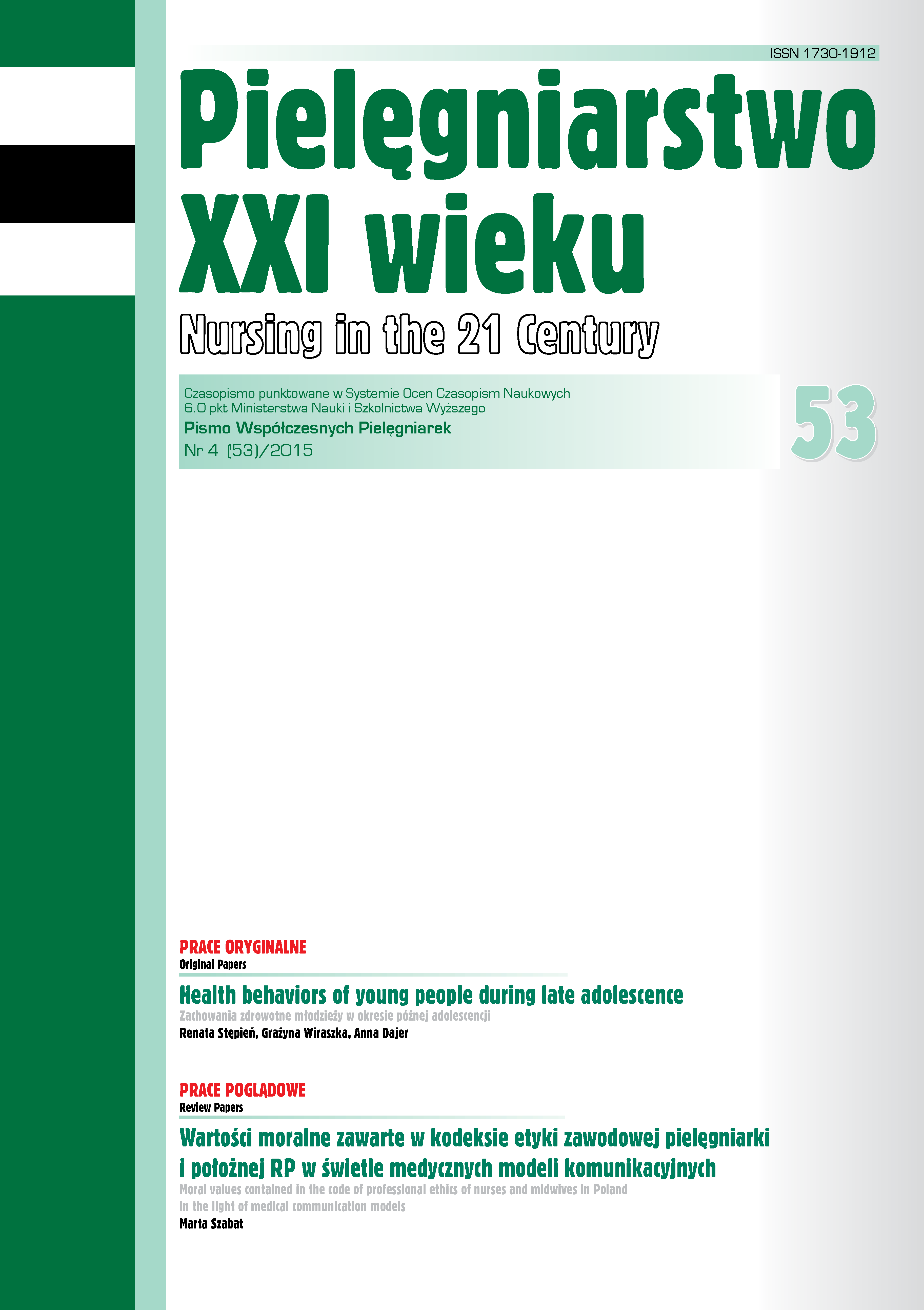Parents’ decisions regarding vaccines and professional education about vaccinations
DOI:
https://doi.org/10.12923/p21w-2015-4/42Keywords:
vaccination, the parents’ decision, profesjonalna edukacjaAbstract
PARENTS’ DECISIONS REGARDING VACCINES AND PROFESSIONAL EDUCATION ABOUT VACCINATIONS
Introduction. Parents make decisions about the implementation of vaccination in children mainly relying on education provided by the medical staff. At the same time, they benefit from other sources of knowledge about infectious diseases and vaccines, including most commonly the Internet. An important factor influencing parents’ approaches to immunization includes also the experiences related with the implementation of immunoprophylaxis in their own offspring.
Aim. An attempt to assess the relationship between the number of children in a family and making decisions about the importance of vaccination as well as identification of the influence of sources of information on the parents’ view on immunization.
Material and methods. The pilot study comprised 156 mothers of the first child and 112 mothers giving birth to the subsequent child in the Department of Obstetrics and Pathology of Pregnancy, Teaching Hospital No. 1 in Lublin, in 2014. The method used was a diagnostic survey, using the author’s questionnaire, which included 16 questions related to the theme of the paper.
Results. The willingness to implement vaccination was confirmed by 98.1% of the mothers of the first and 100% of the subsequent child. The use of combined vaccines was declared by significantly more mothers expecting subsequent child (66.9%; p<0.001). Only mothers expecting their first child in the majority did not take a decision as to the form of immunoprophylaxis (24.11%; p<0.001). The recommended vaccinations are used more often by mothers of the subsequent child (28.57%; p<0.05). Education by medical staff contributed to the decision concerning implementation of the vaccination in 71.8% of mothers of the first and 43.8% of the subsequent child.
Conclusion. Different sources of knowledge about children’s vaccinations and mothers’ experience positively shape their vaccinology decisions. The combined vaccines – according to the declarations of the respondents - are most often used in mandatory immunoprophylaxis.
References
1. Austvoll-Dahlgren A, Helseth S. What informs parents´decision-making about childhood vaccinations? J. Adv. Nurs. 2010; 66(11): 2421-2430.
2. Martinez-Mora M, Alvarez-Pasquin M, Rodriguez- Salvanes F. Vaccines and Internet: Characteristics of the Vaccine Safety Net Web sites and suggested improvements. Vaccine. 2008; 26: 6950-6956.
3. Leask J, Kinnersley P, Jackson C, et al. Communicating with parents about vaccination: a framework for health professionals. BMC Pediatr., 2012; 12: 154-159.
4. Freed GL, Clark SJ, Butchart AT, et al. Parental vaccine safety concerns in 2009. Pediatrics 2010; 125: 654-659.
5. Endrich M, Blank P, Szucs T. Influenza vaccination uptake and socioeconomic determinants in 11 European countries. Vaccine. 2009; 27: 4018-24.
6. Blank P, Schwenkglenks M, Szucs T. Vaccination coverage rates in eleven European countries during two consecutive influenza seasons. J. Infect. 2009; 58: 446-458.
7. Czajka H, Sawiec P. Od Programu Szczepień Ochronnych do indywidualnych rozwiązań. Med Prakt/Szczepienia (wydanie specjalne). 2013; 3: 36-43.
8. Gawlik K, Woś H, Waksmańska W, i wsp. R. Opinie rodzicow na temat szczepień ochronnych u dzieci. Medycyna Ogolna i Nauki o Zdrowiu 2014; 4(20): 360-364.
9. Jackowska T, Kryszewska M. Realizacja szczepień zalecanych u dzieci i ocena świadomości ich rodzicow. Ped. Pol. 2010; 85(3): 201-206.
Downloads
Published
Issue
Section
License
Copyright (c) 2015 Anna Bednarek (Autor)

This work is licensed under a Creative Commons Attribution 4.0 International License.




